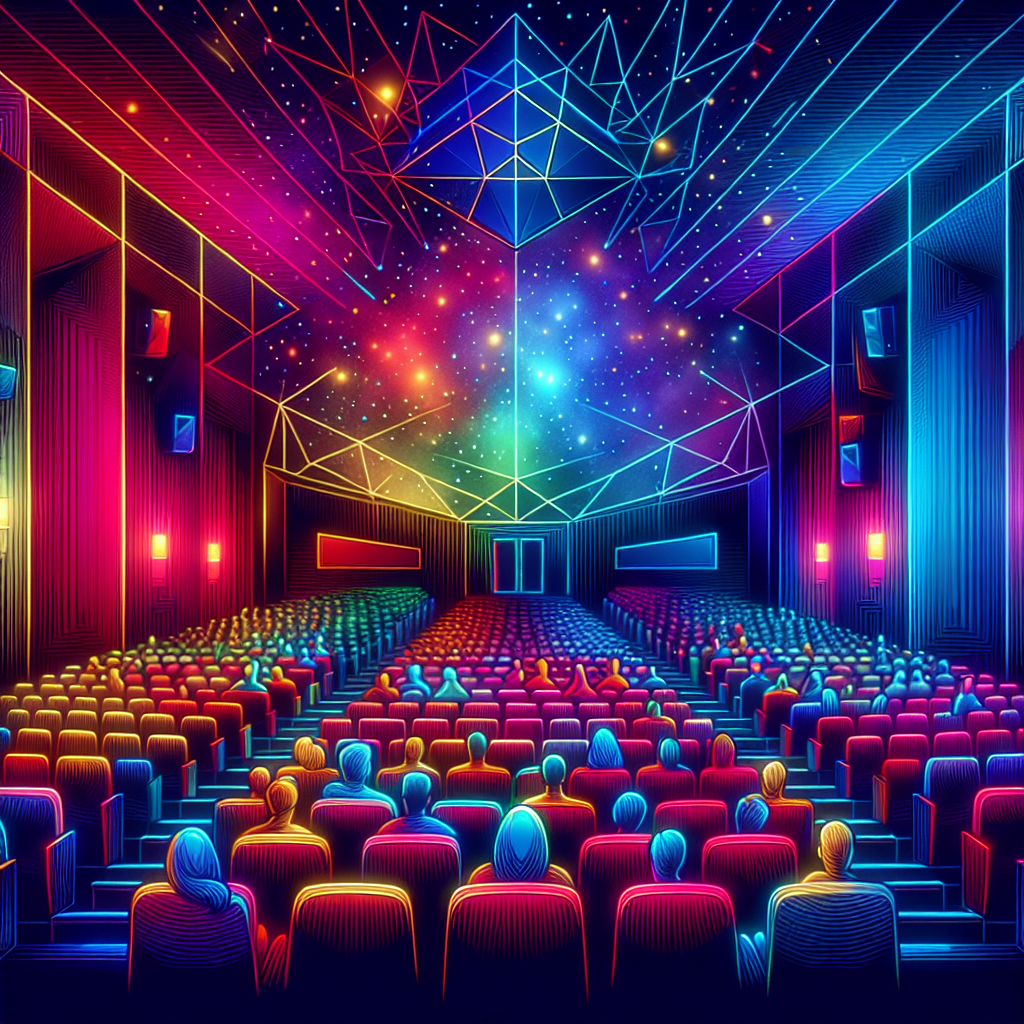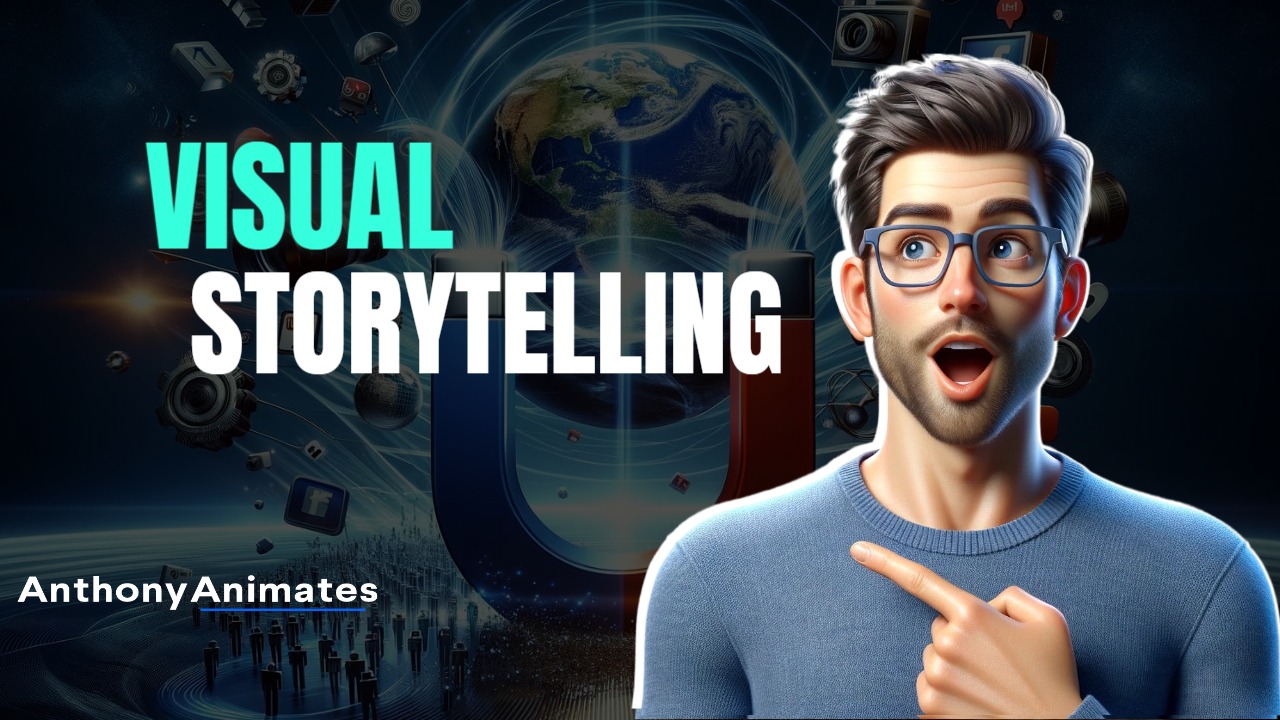10 Stunning Examples of 3D Video in Advertising and Marketing
3D video has emerged as a game-changing tool that transforms how brands communicate their stories. Gone are the days when flat, two-dimensional visuals could capture audience attention – today’s consumers crave immersive, visually stunning experiences that leap off the screen and into their imagination.
Modern marketing is all about creating memorable connections, and 3D video technology provides an unparalleled canvas for brands to paint their narratives with depth, emotion, and incredible realism. From sleek product demonstrations to mind-bending brand storytelling, these visual masterpieces aren’t just videos – they’re portals into alternate realities that can instantly elevate a company’s communication strategy.
Why 3D Videos Are Marketing Magic
- Create instant visual impact
- Boost audience engagement by 200%
- Simplify complex product explanations
- Provide an immersive brand experience
- Demonstrate products from impossible angles
Whether you’re a startup looking to disrupt your industry or an established brand wanting to reconnect with your audience, 3D video production offers a cutting-edge solution that combines creativity, technology, and strategic storytelling.
1. Nike: Breaking Boundaries with 3D Product Visualization
Nike has long been a trailblazer in marketing innovation, and their approach to 3D video production is nothing short of revolutionary. By leveraging advanced 3D visualization techniques, they’ve transformed product showcasing from a mundane display into an electrifying visual experience.
The Technological Marvel
Imagine a shoe that doesn’t just sit on a shelf, but comes to life through intricate 3D animation. Nike’s marketing team has mastered the art of creating immersive 3D videos that deconstruct their products with surgical precision. Each video becomes a technical ballet, revealing every stitch, curve, and innovative design element with breathtaking clarity.
“3D video isn’t just about looking good – it’s about telling a story that resonates with viewers at a visceral level.” – Nike Design Team
Breaking Down the Visual Magic
- 360-degree product rotations that reveal minute details
- Slow-motion breakdowns of material composition
- Interactive visualizations showing performance features
- Dynamic rendering that highlights technological innovations
What sets Nike apart is their ability to transform technical specifications into a narrative. Their 3D videos don’t just show a product; they invite viewers into a world where technology, design, and human potential converge. By using cutting-edge 3D animation techniques, they’ve turned product marketing into an art form that educates, inspires, and ultimately drives consumer desire.
The result? Marketing content that doesn’t feel like marketing at all – but instead, an immersive journey into innovation itself.
2. Apple: Cinematic 3D Product Reveals
When it comes to creating jaw-dropping 3D video experiences, Apple doesn’t just set the bar – they practically own the entire stadium. Their product launch events have become legendary, transforming what could be a simple tech announcement into a cinematic spectacle of 3D video technology.
The Art of the Reveal
Apple’s mastery of 3D video production goes far beyond simple product demonstrations. Each reveal is meticulously crafted to make viewers feel like they’re witnessing something between a technological miracle and a Hollywood blockbuster. Their 3D animations don’t just showcase products; they create entire universes around them.
“In our world, every pixel tells a story, and every animation is a journey.” – Apple Design Team
Breaking Down the Visual Choreography
- Hyper-detailed 3D renderings that highlight microscopic design elements
- Seamless camera movements that reveal product features dramatically
- Lighting and shadow techniques that make devices look almost supernatural
- Interactive 3D graphics that deconstruct complex technological innovations
Take their iPhone reveals, for instance. What could be a mundane product launch becomes an immersive experience where each curve, material transition, and technological innovation is celebrated like a work of art. Through sophisticated 3D animation, they transform cold technology into something emotionally compelling.
The genius of Apple’s approach? Making viewers feel like they’re not just watching a product launch, but participating in a glimpse of the future.
3. Mercedes-Benz: Virtual Reality Car Experiences
Mercedes-Benz has elevated the car buying experience from a traditional showroom encounter to an extraordinary virtual journey through immersive 3D video technology. By embracing cutting-edge 3D video production, they’ve transformed how potential customers interact with their luxury vehicles, making every digital interaction feel like a personalized test drive.
Reimagining Automotive Exploration
Imagine slipping on a virtual reality headset and suddenly finding yourself inside a gleaming Mercedes, able to explore every intricate detail without leaving your living room. Their virtual reality videos aren’t just marketing materials – they’re portals into automotive excellence that engage multiple sensory experiences.
“We don’t just sell cars. We create immersive experiences that connect technology, design, and human aspiration.” – Mercedes-Benz Innovation Team
The Virtual Showroom Revolution
- 360-degree interior and exterior vehicle exploration
- Real-time color and configuration customizations
- Interactive feature demonstrations
- Simulated driving experiences in various environments
By leveraging advanced 3D animation techniques, Mercedes-Benz has created a marketing strategy that goes beyond traditional advertising. Their virtual reality videos allow potential buyers to understand vehicle mechanics, feel interior luxury, and experience performance characteristics – all without stepping into a physical showroom.
The result? A marketing approach that’s as innovative and precise as the vehicles themselves – turning potential customers into passionate brand enthusiasts through the magic of immersive digital storytelling.
4. Coca-Cola: Augmented Reality Marketing
Coca-Cola has always been a master of innovative marketing, and their venture into 3D video and augmented reality (AR) is nothing short of marketing brilliance. By transforming traditional packaging into an interactive digital playground, they’ve redefined how brands can engage with consumers in the digital age.
The AR Experience Revolution
Imagine picking up a Coca-Cola bottle and watching it come alive through your smartphone screen. Their augmented reality campaigns turn ordinary product packaging into extraordinary interactive experiences that blur the lines between physical and digital worlds.
“We’re not just selling a drink; we’re creating moments of magic and connection.” – Coca-Cola Innovation Team
Breaking Down the Digital Magic
- Interactive bottle labels that tell brand stories
- Gamified experiences triggered by product packaging
- Virtual characters and animations that pop out of Coca-Cola containers
- Personalized digital interactions that enhance brand engagement
Their AR marketing goes beyond traditional advertising by creating memorable, shareable moments. By using cutting-edge 3D animation techniques, Coca-Cola transforms a simple drink into an immersive storytelling platform that resonates with digital-native audiences.
The genius? They’ve turned product consumption into an interactive experience that generates organic social media buzz and creates deeper emotional connections with their brand. Who knew a soft drink could be a gateway to digital wonderland?
5. NASA: Scientific Visualization through 3D Video
NASA has transformed scientific communication through breathtaking 3D video production, turning complex astronomical phenomena into visually stunning narratives that captivate both scientific communities and public imagination. Their ability to translate intricate cosmic data into immersive 3D visualization is nothing short of extraordinary.
Cosmic Storytelling Through Advanced Graphics
By leveraging cutting-edge 3D video technology, NASA has democratized space exploration, allowing millions to journey through distant galaxies, witness planetary formations, and understand complex scientific concepts without requiring a Ph.D. in astrophysics. Their 3D videos are more than just animations – they’re windows into the universe’s most profound mysteries.
“We’re not just showing space; we’re inviting humanity to explore and understand the cosmos through visual storytelling.” – NASA Visualization Team
Breaking Down Astronomical Visualization
- Hyper-realistic planetary surface reconstructions
- Dynamic simulations of black hole interactions
- Animated representations of spacecraft missions
- Detailed molecular and astronomical scale visualizations
From reconstructing the surface of Mars to simulating gravitational wave interactions, NASA’s 3D animation techniques transform raw scientific data into compelling visual narratives. Their videos bridge the gap between complex scientific research and public understanding, making astronomical phenomena accessible and fascinating.
The result? Scientific communication that doesn’t just inform, but genuinely inspires wonder about our universe’s infinite complexity.
6. Samsung: Interactive Product Demonstrations
Samsung has revolutionized product marketing through innovative 3D video demonstrations that transform technical specifications into immersive, interactive experiences. Their approach goes far beyond traditional product showcases, creating digital journeys that invite consumers to explore cutting-edge technology from every imaginable angle.
Redefining Product Visualization
Imagine a smartphone that doesn’t just sit static on a screen, but rotates, deconstructs, and reveals its inner workings with surgical precision. Samsung’s 3D video production team has mastered the art of turning complex technological innovations into visually compelling narratives that speak directly to tech enthusiasts and casual consumers alike.
“Technology isn’t just about specifications – it’s about creating experiences that connect with people’s imagination.” – Samsung Design Team
The Interactive Demonstration Approach
- 360-degree product rotations revealing microscopic design details
- Real-time component breakdowns showing internal engineering
- Interactive touchpoints that explain feature functionality
- Dynamic rendering techniques highlighting material innovations
By leveraging advanced 3D animation techniques, Samsung transforms what could be dry technical presentations into engaging visual stories. Their demonstrations don’t just show products; they invite viewers to understand the intricate engineering and design philosophy behind each device.
The magic? Making complex technology feel intuitive, exciting, and surprisingly human – proving that great product visualization is an art form in itself.
7. IKEA: Realistic Product Placement
IKEA has transformed the world of furniture marketing through groundbreaking 3D video technology that allows customers to virtually place furniture in their own living spaces before making a purchase. Their innovative approach goes far beyond traditional product catalogs, creating an immersive experience that bridges the gap between imagination and reality.
Virtual Room Design Revolution
Picture this: you’re scrolling through IKEA’s app, and suddenly, that sleek Scandinavian sofa materializes in your living room with photorealistic precision. Their 3D video production isn’t just about showcasing products – it’s about helping customers visualize how these pieces will transform their personal spaces.
“We’re not selling furniture. We’re helping people design their dream living environments.” – IKEA Innovation Team
Breaking Down the Digital Design Magic
- Hyper-realistic 3D renderings that match real-world lighting and textures
- Real-time furniture placement using augmented reality
- Precise scale and dimension representations
- Interactive color and material customization options
By leveraging cutting-edge 3D animation techniques, IKEA has solved one of the biggest challenges in furniture shopping: the ability to truly imagine how a piece will look in your home. Their technology eliminates guesswork, reducing purchase anxiety and creating a more confident shopping experience.
The genius? Transforming online furniture shopping from a leap of faith into a precise, personalized design journey. Who knew 3D video could make furniture shopping feel like interior design magic?
8. Red Bull: Extreme Sports Storytelling
Red Bull has mastered the art of transforming 3D video into an adrenaline-pumping storytelling medium that goes far beyond traditional marketing. Their approach to extreme sports cinematography doesn’t just capture events – it creates immersive experiences that make viewers feel like they’re right in the middle of heart-stopping action.
Pushing Visual Boundaries
Imagine watching a wingsuit flyer descending through mountain ranges, every movement captured with mind-blowing precision through advanced 3D video technology. Red Bull doesn’t just document extreme sports; they transform these moments into cinematic masterpieces that blur the lines between documentary, adventure film, and pure visual poetry.
“We don’t just show extreme sports. We tell stories that redefine human potential.” – Red Bull Creative Team
The Visual Storytelling Approach
- Multi-angle 3D renderings of complex athletic movements
- Immersive camera techniques that capture impossible perspectives
- Real-time motion tracking of athletes in extreme environments
- Dynamic visual effects that amplify the intensity of each moment
By leveraging sophisticated 3D animation techniques, Red Bull transforms extreme sports documentation into a form of visual storytelling that’s part documentary, part art, and entirely compelling. Their videos don’t just show athletes – they reveal the human spirit of adventure, pushing technological boundaries to capture moments that seem almost superhuman.
The result? Marketing content that feels more like a pulse-racing adventure film than a brand promotion – proving that when done right, 3D video can turn brand storytelling into an art form that leaves viewers breathless.
9. Medical Device Companies: Educational 3D Animations
Medical device companies have discovered a groundbreaking approach to patient and professional education through immersive 3D video technology. By transforming complex medical procedures and device functionalities into visually stunning, easy-to-understand animations, they’re revolutionizing how medical information is communicated.
Demystifying Medical Complexity
Imagine watching a 3D animation that takes you inside the human body, revealing how a sophisticated medical device operates with microscopic precision. These aren’t just videos – they’re educational portals that break down intricate medical technologies into digestible, fascinating visual narratives that both healthcare professionals and patients can appreciate.
“Our goal is to make medical innovation transparent, understandable, and ultimately, less intimidating.” – Medical Device Innovation Team
The Educational 3D Video Revolution
- Detailed anatomical visualizations showing device interactions
- Interactive 3D models demonstrating surgical procedures
- Molecular-level representations of medical technology
- Patient-friendly explanations of complex medical interventions
By employing advanced 3D animation techniques, medical device manufacturers are transforming medical communication. These videos do more than explain – they demystify, educate, and ultimately build trust by providing unprecedented insights into medical technologies.
The brilliance? Turning potentially intimidating medical information into engaging, comprehensible visual stories that empower both medical professionals and patients. Who knew medical technology could be so visually captivating?
10. Gaming Industry: Trailers and Promotional Content
The gaming industry has transformed 3D video into an art form that doesn’t just market games – it creates entire universes that captivate millions of players worldwide. Game trailers have evolved from simple gameplay snippets to cinematic experiences that rival Hollywood blockbusters, using cutting-edge 3D video production techniques to blur the lines between interactive entertainment and visual storytelling.
Beyond Traditional Trailers
Modern game trailers are more than promotional content – they’re immersive experiences that transport viewers into meticulously crafted digital worlds. Companies like Blizzard, Rockstar, and CD Projekt Red have elevated 3D video technology to such an extraordinary level that their trailers often become global events, generating millions of views and creating unprecedented anticipation.
“We’re not just showing a game. We’re revealing an entire universe waiting to be explored.” – AAA Game Studio Creative Director
The Cinematic 3D Video Revolution
- Photorealistic character animations that capture minute emotional nuances
- Dynamic environmental renderings showcasing game worlds
- Cinematically choreographed action sequences
- Real-time graphics that demonstrate next-generation visual capabilities
By leveraging advanced 3D animation techniques, game developers have transformed promotional content from mere advertisements into narrative experiences. Take games like “Cyberpunk 2077” or “Red Dead Redemption 2” – their trailers aren’t just showing gameplay, but telling complex stories that generate emotional connections before players even pick up a controller.
The magic? Creating digital trailers so compelling that they become cultural moments, proving that in the world of gaming, 3D video is less about marketing and more about world-building. Who knew promotional content could be its own form of entertainment?


